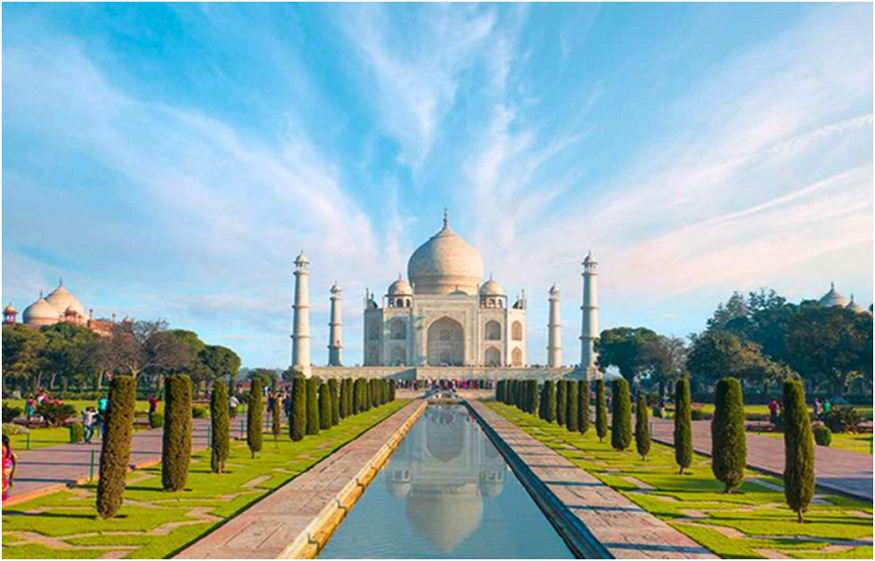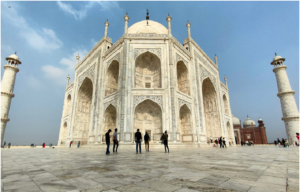On the same day taj mahal tour by car you will discover The Taj Mahal which is the pinnacle of Indo-Islamic design and construction. It was inspired by the cultural and historical context of the Islamic Mughal empire, which ruled over much of India at the time.
After the passing of Mumtaz Mahal, one of the Mughal Emperor Shah Jahan’s favorite wives, he commissioned the construction of this tomb. The Taj Mahal was built on the south bank of the River Yamuna in Agra beginning in 1632 AD (1041 AH) and was essentially finished by 1648 AD (1058 AH).
Symbolism of Taj Mahal
During taj mahal tour by car, learning the symbolic content of Mughal architecture will be a phenomenal experience. Inspired by a lyric by the royal jeweller and poet Bibadal Khan, the Taj Mahal complex was envisioned as a duplicate on earth of the deceased’s dwelling in paradise.
A wide range of concepts, including the spiritual, intellectual, mathematical, and lyrical, are included in this conversation, which begins with what we perceive with our five senses. A purposeful metaphoric function was assigned to the ever-changing sunshine reflected off Taj’s translucent marble, which was meant to represent the presence of god as light.
The use of symmetry and hierarchical arrangement
The complex was organized using formal systematization exemplified by Jahan’s sponsorship of the arts, which can be seen in the prominence given to symmetry and geometric layout. Concepts of intellectual and spiritual world peace were reflected in the simultaneous pairing, corresponding, and integrating thoughts indicated by bilateral symmetry.
An elaborate system of inferred grids achieved the Taj Mahal’s proportions based on the Mughul Gaz unit of measurement. Architectural hierarchies draw attention to specific details and add drama to a project. The Taj Mahal’s use of red sandstone and white marble in a staggered arrangement carries a wealth of symbolic meaning.
The Vishnudharmottara Purana, an ancient Hindu text, suggested using white stone for constructions by Brahmins (a priestly caste) and red stone by Kshatriyas (a warrior caste), and the Mughals elaborated on this idea. The Mughals established their legitimacy as rulers in Indian eyes by erecting monuments that used color coding to signify different social groups.
The Mughal Empire had Persian roots, and red sandstone was significant because it was the only color used for the tents of the ruling family. Each building’s prominence in the Taj Mahal complex is indicated by the proportion of white marble (or sometimes white polished plaster) utilized in its construction.
Similarly hierarchical is the prevalence of naturalist decoration. The frequency with which it appears along the procession route to the culminating Mausoleum increases as it moves from the more humble jilaukhana and caravanserai neighborhoods.
As a symbol of the perfection, stylization, and permanence of the garden of paradise it evokes. Characters like the ‘vase of plenty’ (Kalasha) share common ground with plant metaphors in Hindu traditions.
Ideas of paradise were also articulated through sound. The reverberation time (the amount of time it takes for an initial sound to be heard until all of its echoes have faded) within the Mausoleum is 28 seconds. The words of the Hafiz, who were paid to recite the Quran around the clock as a form of worship for Mumtaz’s soul, would echo through the building.



